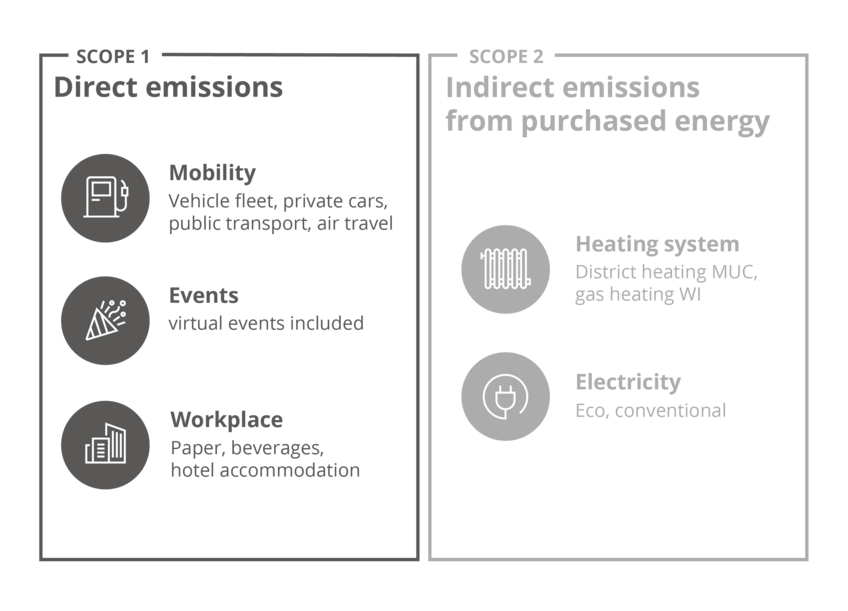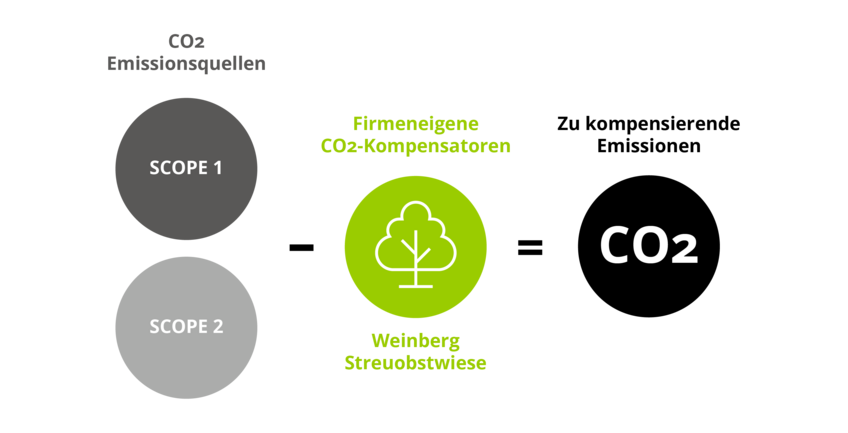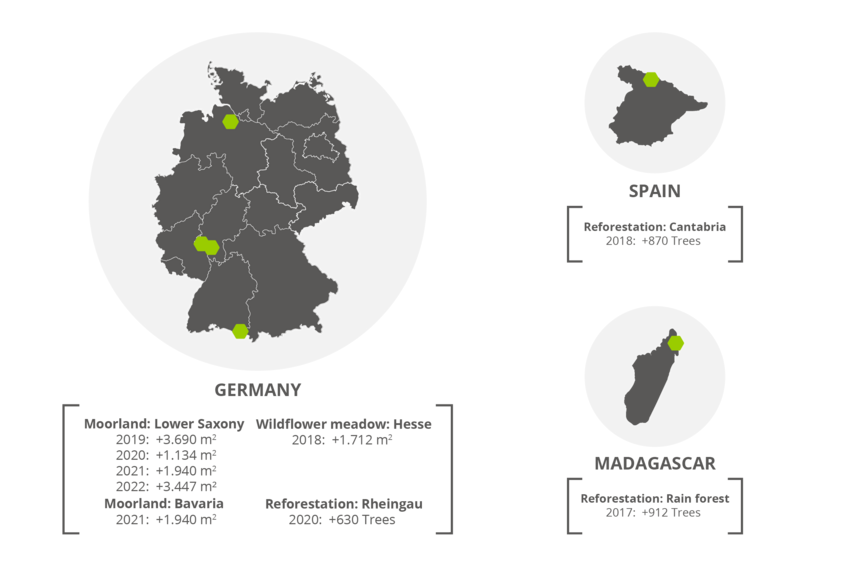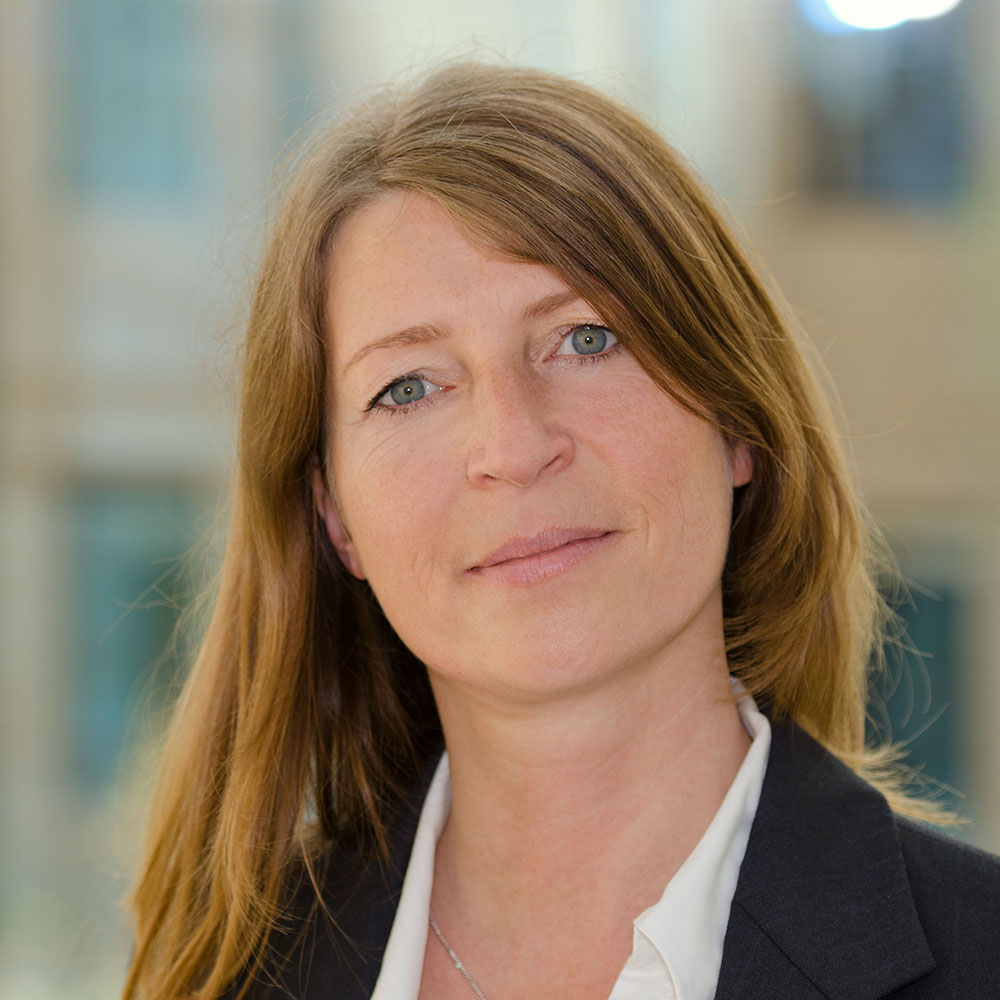Step 1: Determine CO₂ sources
We categorize the CO₂ sources in our value chain according to the scopes of the German Sustainability Code. A distinction is made between direct (Scope 1) and indirect emissions (Scope 2 and 3). We have pragmatically researched and recorded the main CO₂ sources. In our day-to-day consulting activities, we hardly generate any Scope 3 emissions and mostly compensate our suppliers ourselves. Scope 3 emissions have therefore been ignored. The CO₂ sources identified are examined to determine the extent to which emissions can be reduced.
Step 2: Determine CO₂ footprint
Now we convert the CO₂ sources of all company activities into kg CO₂. This is done using the CO₂ calculation scheme from the Federal Office for the Environment and the non-profit organization Naturefund. From the calculated total, we subtract the amount of CO₂ offset by our orchard and vineyard. This is how we obtain the syracom CO₂ footprint each year.
The result is presented to management with suggestions for offset projects and ideas for reducing emissions. At the same time, the process for collecting the CO₂ footprint is being considered and improved to present our result ever more accurately.
Step 3: Selection of CO2 compensation projects
Once the annual CO₂ footprint has been determined, we select our CO₂ compensation projects. Here, the employees decide. They can submit their own projects. It is important to us that the following criteria are met:
- Additionality: The emission reductions are achieved without other financing, such as the sale of CO₂ certificates.
- Permanence: The CO₂ emissions are permanently saved so that they have an offsetting effect in the atmosphere.
- Co-Benefits: There is an additional benefit of an ecological, economic or social nature.
The Federal Office for the Environment and our climate partner Naturefund assume compensation periods of about 50 years, depending on the ecosystem. Climate protection partner Naturefund offers a range of environmental projects. As a rule, one of our offset projects is also a Naturefund project. The amount of CO₂ calculated in Step 2 is converted into the amount of CO₂ compensation sources required, depending on the project: Number of trees and sqm of grassland / orchard or peatland, or protected biotopes. In view of the rapidly progressing climate change, syracom 2022 has decided to double the compensation efforts. Furthermore, the focus is on the clear reduction of CO2 emissions.
Climate protection partner Naturefund
With the Blue Planet Certificate climate certificate, the non-profit nature conservation organization Naturefund is committed to protecting ecosystems. Since intact forests and healthy soils absorb large amounts of CO₂ and produce oxygen through the process of photosynthesis, Naturefund and its partners protect forests, plant trees and preserve ecosystems.
Click here to go to our climate partner page





